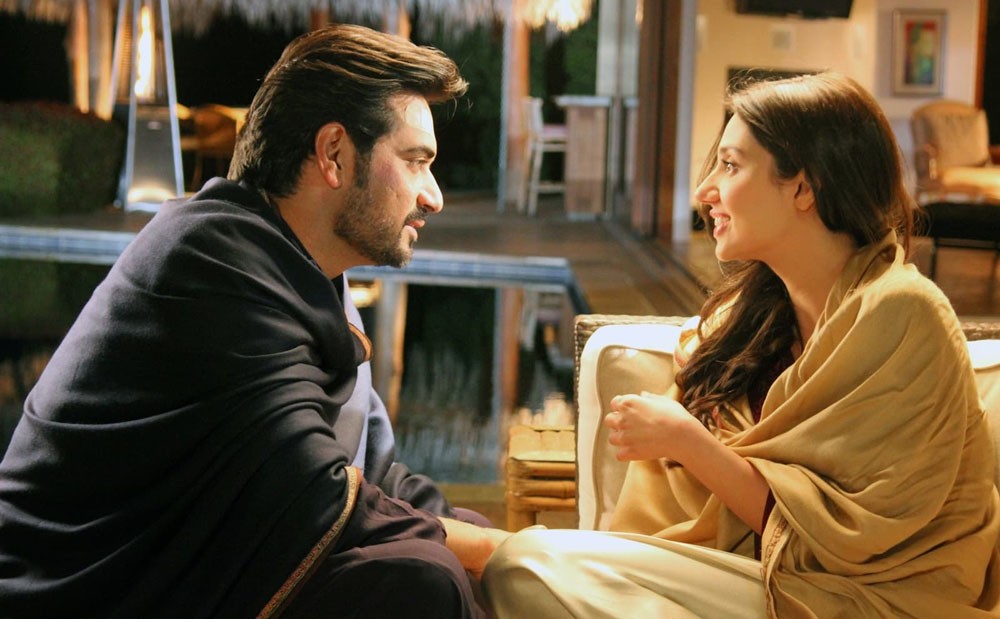
I can’t think of a single Pakistani film that left me as dazed, weeping inwardly, as Bin Roye. I have had time to ponder. My thoughts I lay bare

Those who know me or have read some of my articles may know that I not only grew up on Pakistani cinema but inside it. Both my parents were connected to the film industry. My favourite actor since his first film -- when I was barely a 6 six year old -- remained Nadeem. I breathed Pakistani cinema, both Urdu and Punjabi. One of the most cherished memories of my childhood was meeting Akmal. I also respected other actors and actresses for their range and ability, especially Ejaz for the kind of movies and roles he chose.
I keep praying for the Pakistani cinema’s return to its heydays when the industry produced a hundred movies a year, mostly mediocre but an occasional beauty. Even after a full-fledged assault of Indian movies, I loved our films. I even found depth in Maula Jat.
Despite having lived far away I have tried to watch the new films when and wherever I could. My summer of 2015 in Lahore, though, had a rare surprise. Three big films were being released on the Eid-ul-fitr day: Bajrangi Bhaijaan (Indian), Wrong No and Bin Roye (both Pakistani). My relatives ended up with tickets for Bin Roye. I have always given Humayun Saeed’s acting (is it dull or undertoned?) the benefit of doubt, so joined the cortege. Despite my love for the Pakistani cinema, let me be honest, I don’t put it on the same par with other developed cinemas or works by auteurs, such as Ray or Kiarostami. One shouldn’t compare mules and horses; one should admire a mule for what it is.
I can’t think of a single Pakistani film -- well-made or clumsy -- that left me as dazed, weeping inwardly, as Bin Roye. I have had time to ponder. My thoughts I lay bare.
It is not the thinness of the plot that bothered me. One could argue that there is no plot to begin with. Even the absence of a plot can be a plot in deft hands. I tried telling the story to a friend and realised how comic the exercise became.
By the time Humayun Saeed’s character has an accident, the anticipation of death elicited giggles in the theatre. It has also very little to do with the odalisque nature of the female lead characters. They are so available to be knocked up by the romance rooster that nothing else needs happening in their lives, internally or externally.
The lead character appeared thoroughly devoid of any political or social complexity. Given the times we are living in, the progress Pakistani women have made, their bodies and lives, the chronology of important female characters in Pakistani cinema (wish our actresses weren’t illiterate about it), the character played by Mahira Khan is so insulting that it is not about projecting a wooden Victorian morality anymore. It is one thing to explore repressed sexuality, and another to project a sexless caricature of a modern, Anglicized/Americanized uber class woman. Someone close to me pointed out that the movie was a mahal fantasy. It is also a replica of Las Vegas, adorned by glitter and falsity. But my problem with the film lies elsewhere.
The idea of "give them what they want" is not restricted to commercial cinema that sees entertainment and profit as its raison d’etre. This infects every art form, be it writing, art, music, theatre. Even public libraries in the US are not immune to it. My beef with the movie is that it gyrates around the notion of "give them what they want" so foolishly, even vulgarly that it makes me suspicious of the kind of education our young artists and filmmakers are getting.
They accurately gauge what the upper classes of Pakistan like to see and then succeed in projecting a collective selfie of a modern, affluent group entitled to servants and entitlements onto the screen. This is a class that has come to believe that they are civilized, kind-hearted and belong to a race of nobles ruling over the destitute; they have cunningly clung to them and the services they provide by cementing co-dependency.
The film shows that the class represented therein is a self-absorbed bunch. It might have been different if the movie dished this as a subtle critique. Instead, the directors and actors endorse the obliviousness of the affluent as a thing to emulate by the middle and lower classes by photoshopping a sanitised image. Call it a lulling experiment. Moreover, the connection it creates is dangerous. The projection of a chaste, cultured people rising above tragedy, chosen by God, rewarded by affluence!
The movie does disservice to the intelligence of thinking people who deal with, or try to understand, the social reality of Pakistan every day while being pushed outside the margins of a meaningful narrative. It is not essential to add representatives of lower classes in a film. But it is artistic duty to develop complex upper class characters who respond to sexual, political, educational issues or class tensions.
It also sends a wrong signal to fellow filmmakers that what people want is a thoughtless fantasy. The directors reveal an artistic fatigue, abdicating a moral lens as they sleepwalk through the film without shedding a tear at the nightmare they have created.